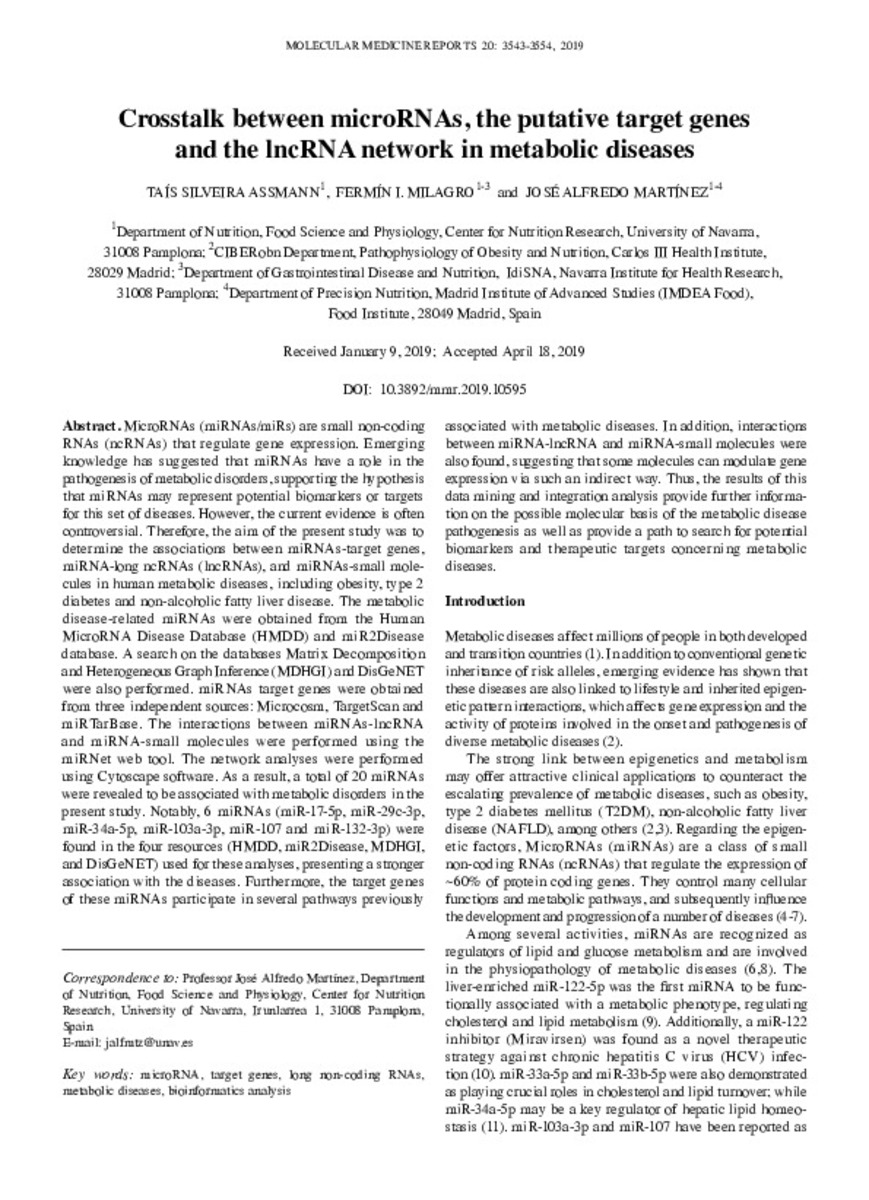Crosstalk between microRNAs, the putative target genes and the lncRNA network in metabolic diseases
Keywords:
Materias Investigacion::Ciencias de la Salud::Química médica
MicroRNA
Target genes
Long non-coding RNAs
Metabolic diseases
Bioinformatics analysis
Publisher:
Spandidos Publications
Note:
This work is licensed under a Creative Commons Attribution-NonCommercial-NoDerivatives 4.0 International (CC BY-NC-ND 4.0) License.
Citation:
Silveira-Assmann, T. (Taís); Milagro-Yoldi, F.I. (Fermín Ignacio); Martinez, J.A. (José Alfredo). "Crosstalk between microRNAs, the putative target genes and the lncRNA network in metabolic diseases". Molecular Medicine Reports. 20 (4), 2019, 3543 - 3554
Statistics and impact
0 citas en

Items in Dadun are protected by copyright, with all rights reserved, unless otherwise indicated.







